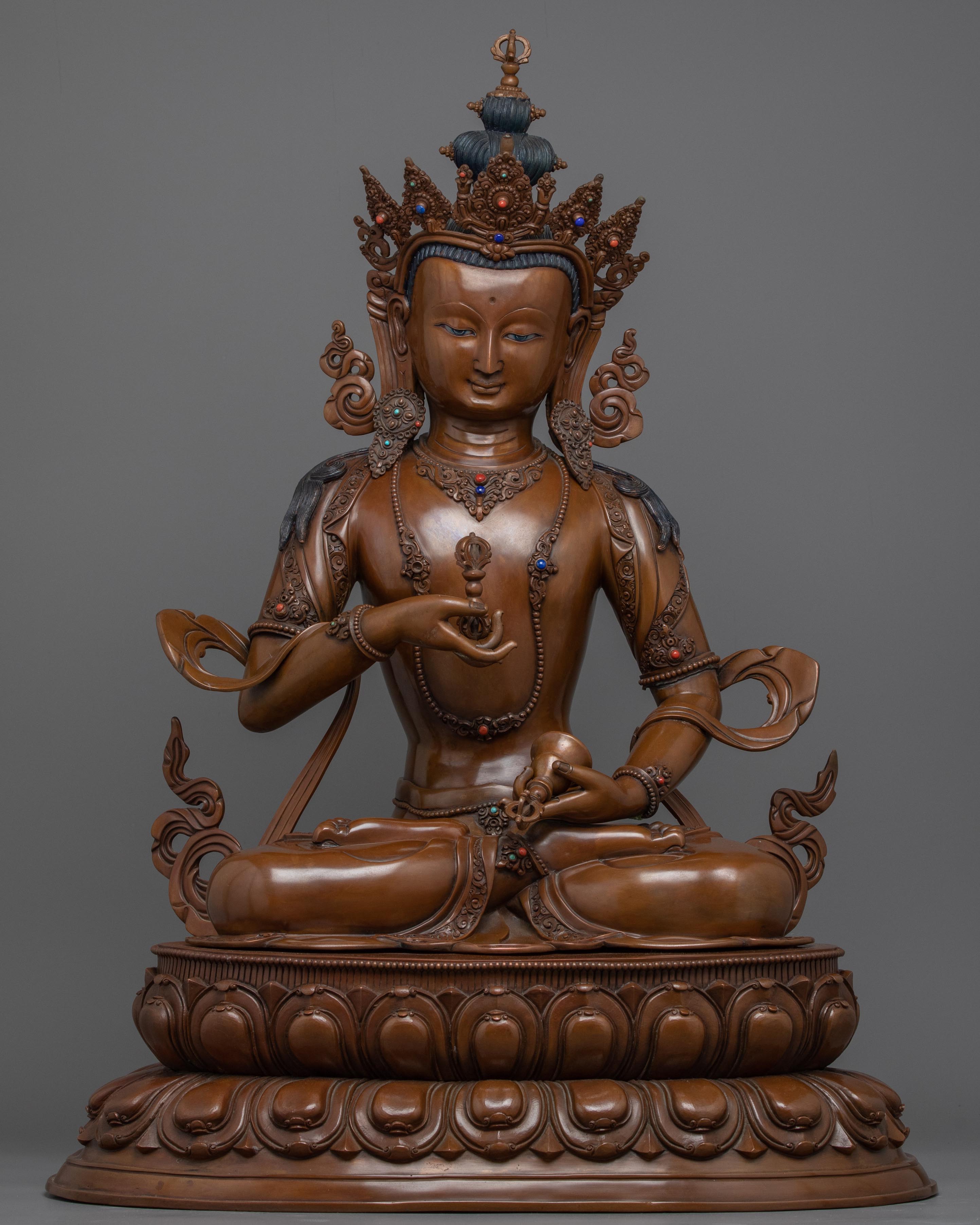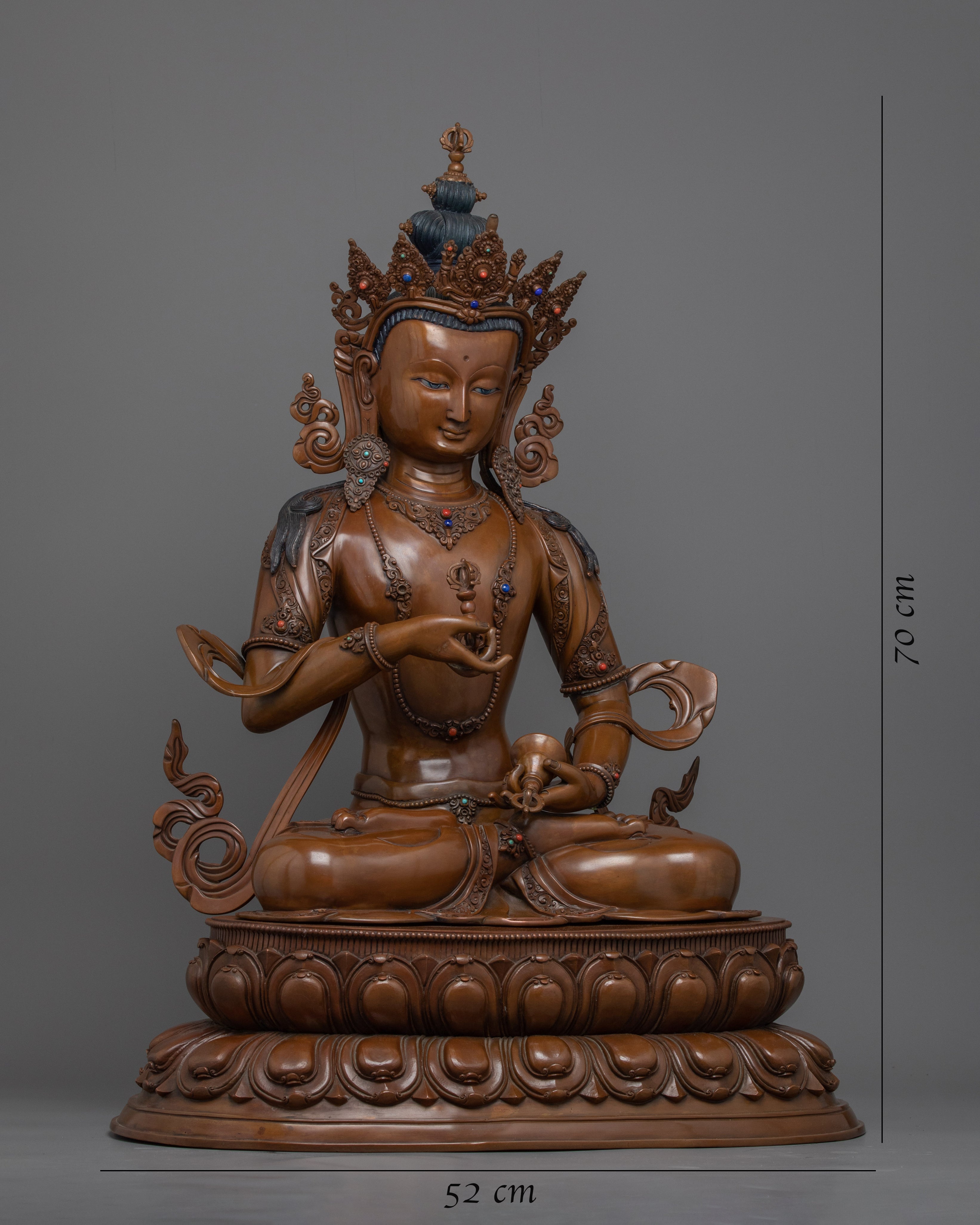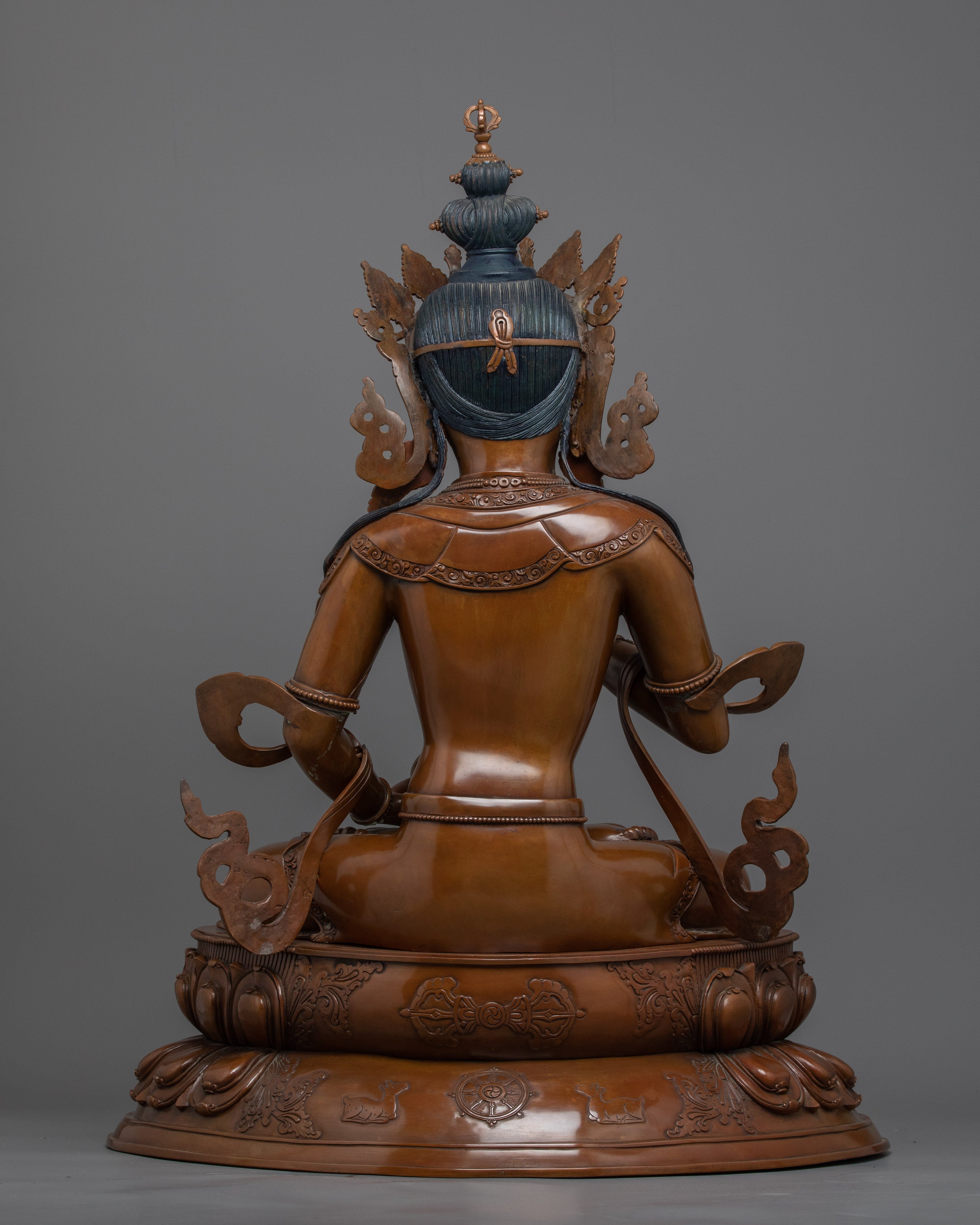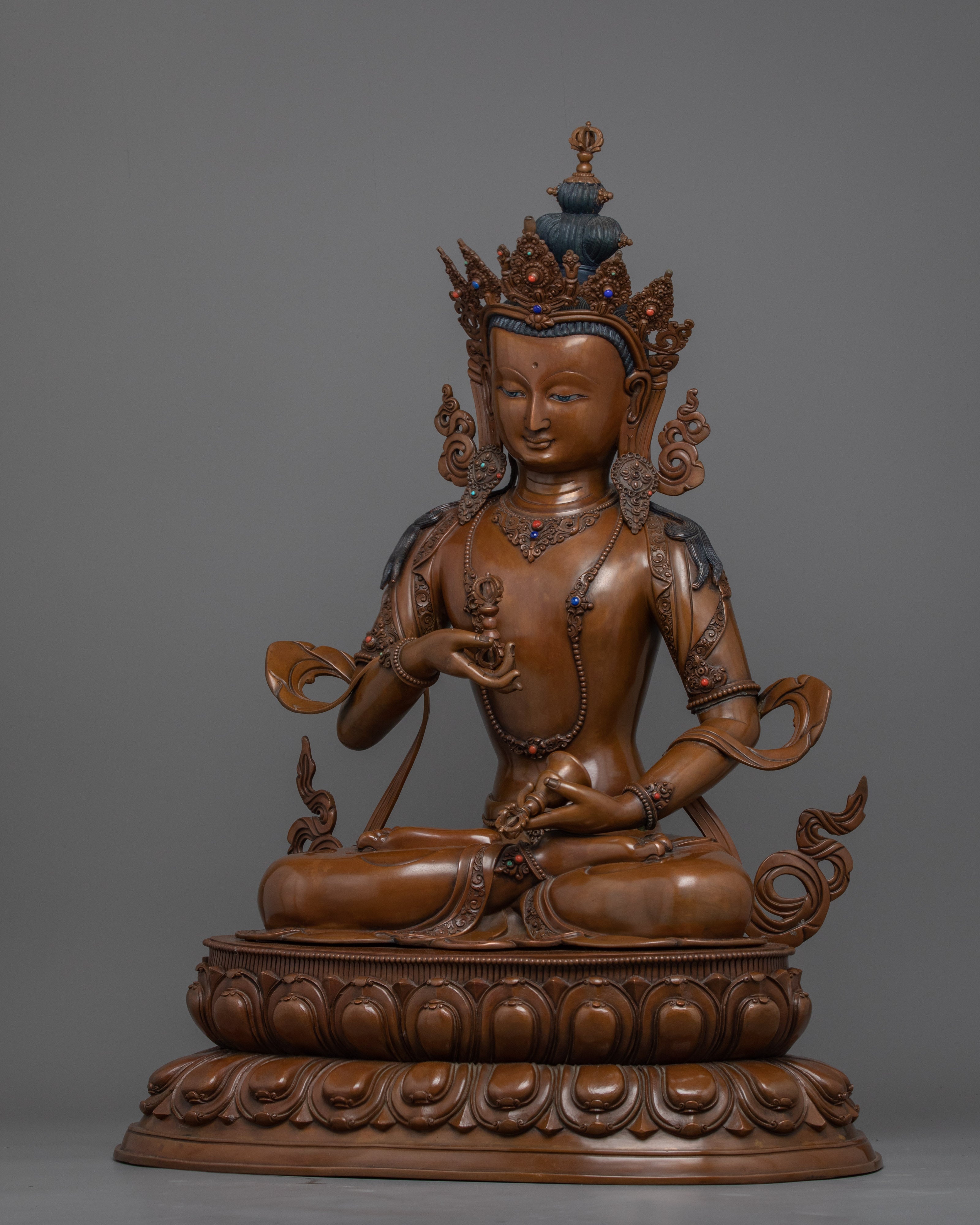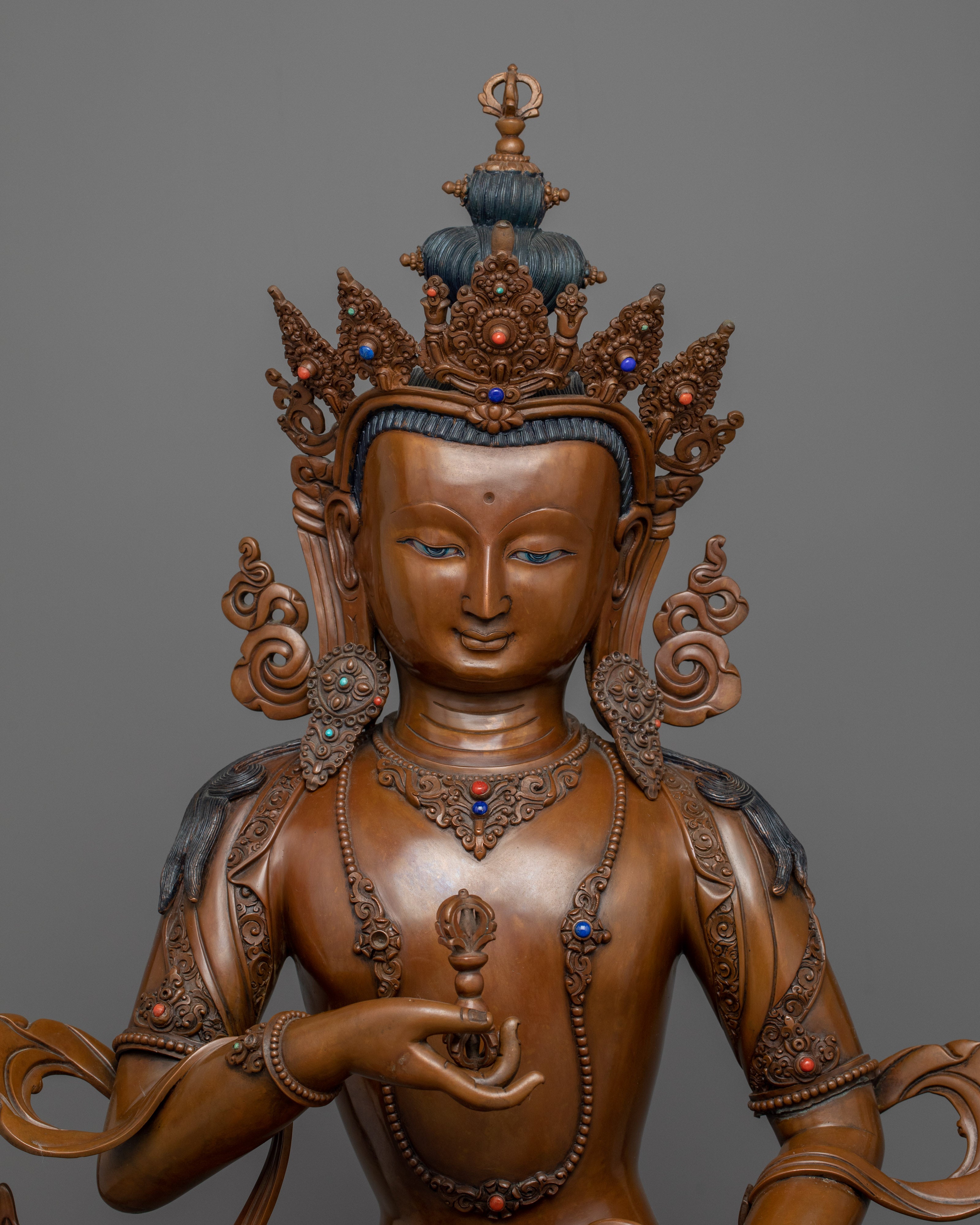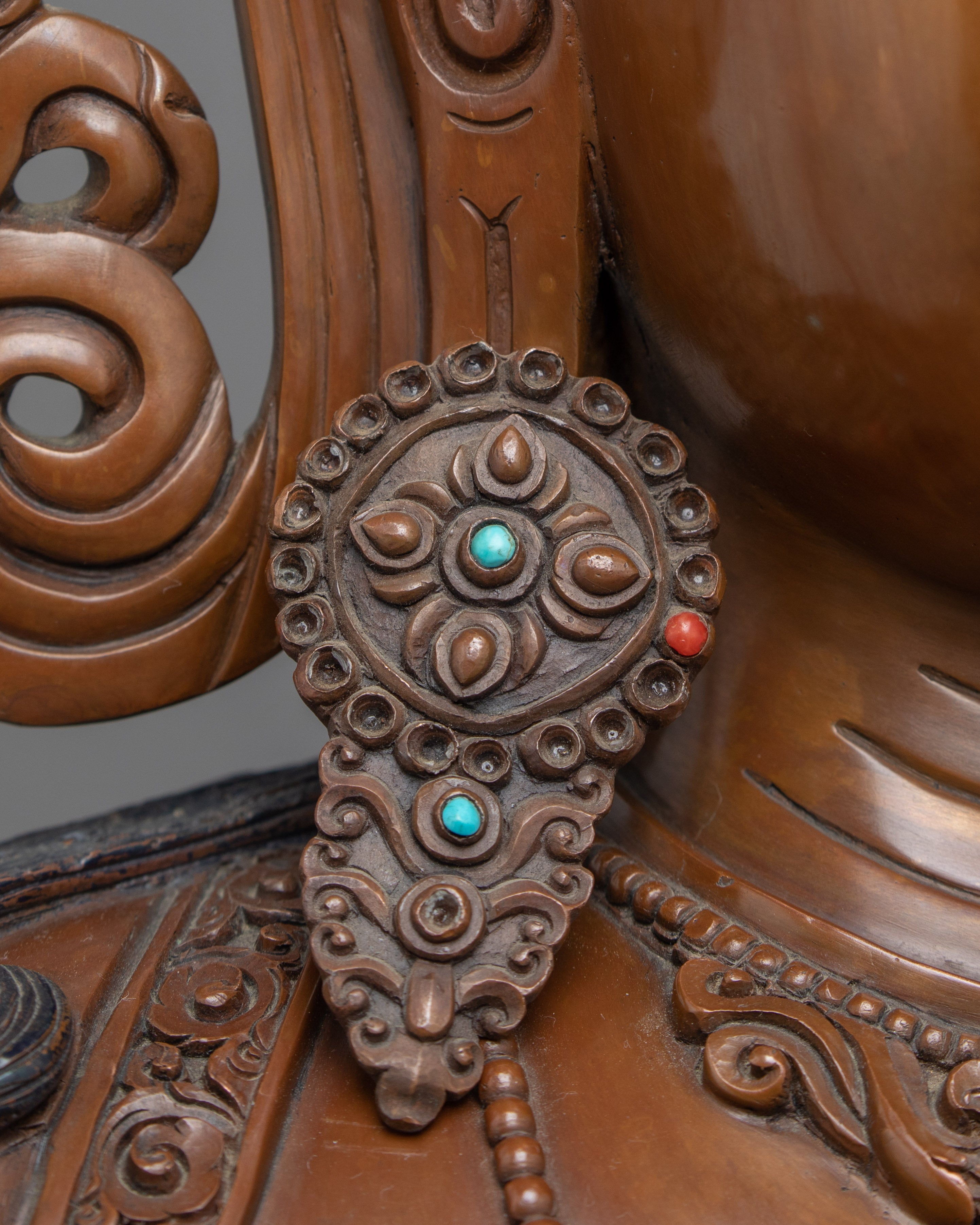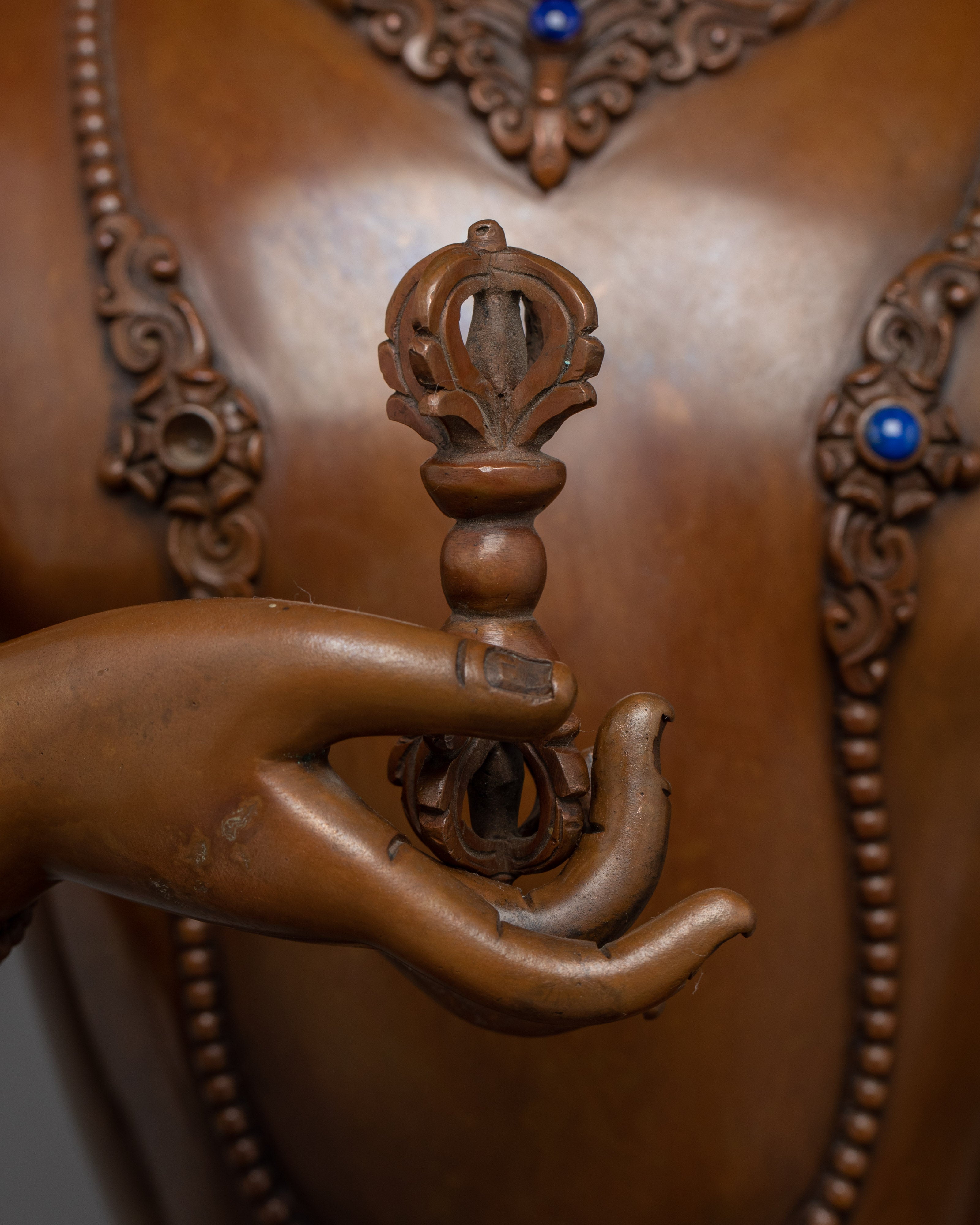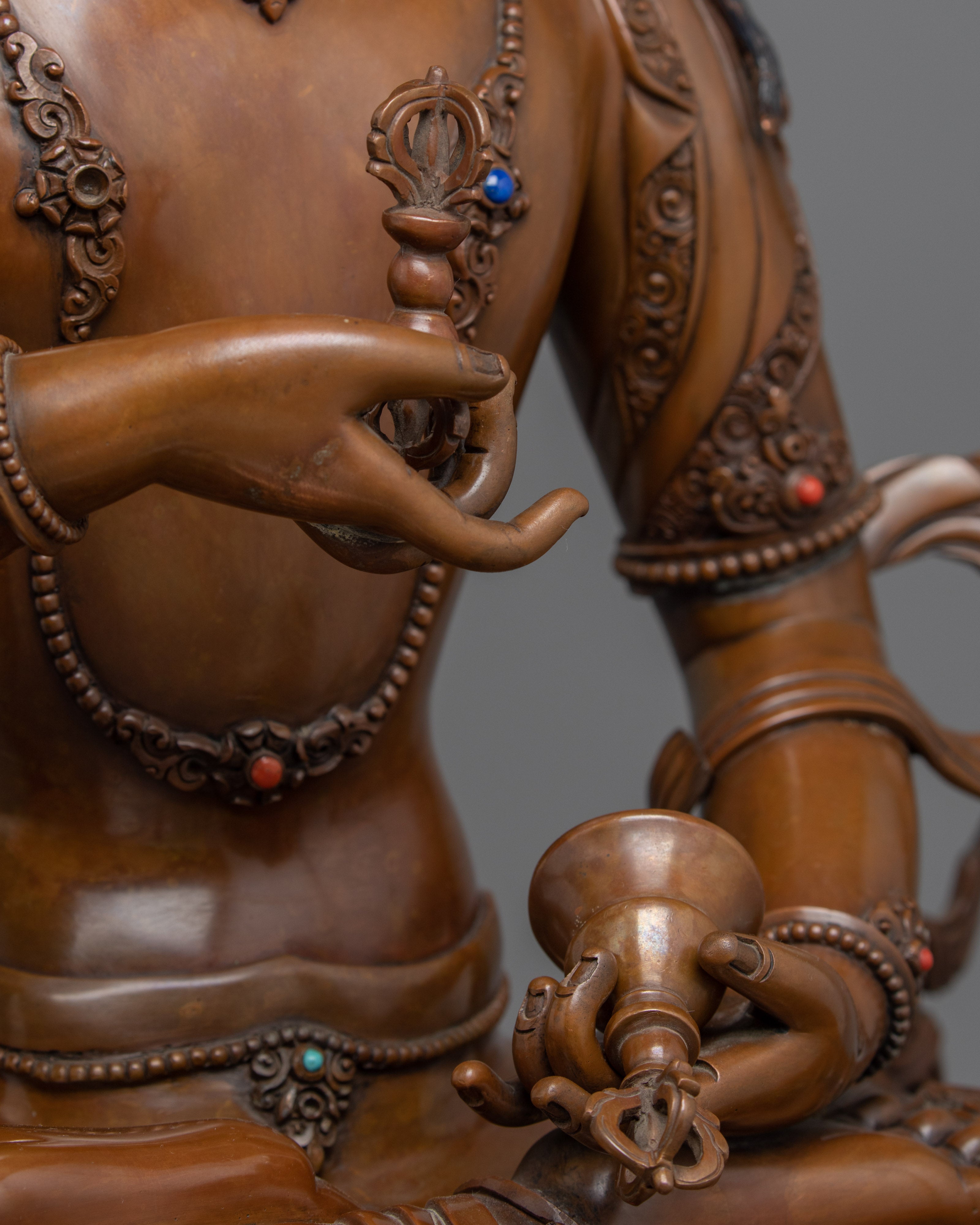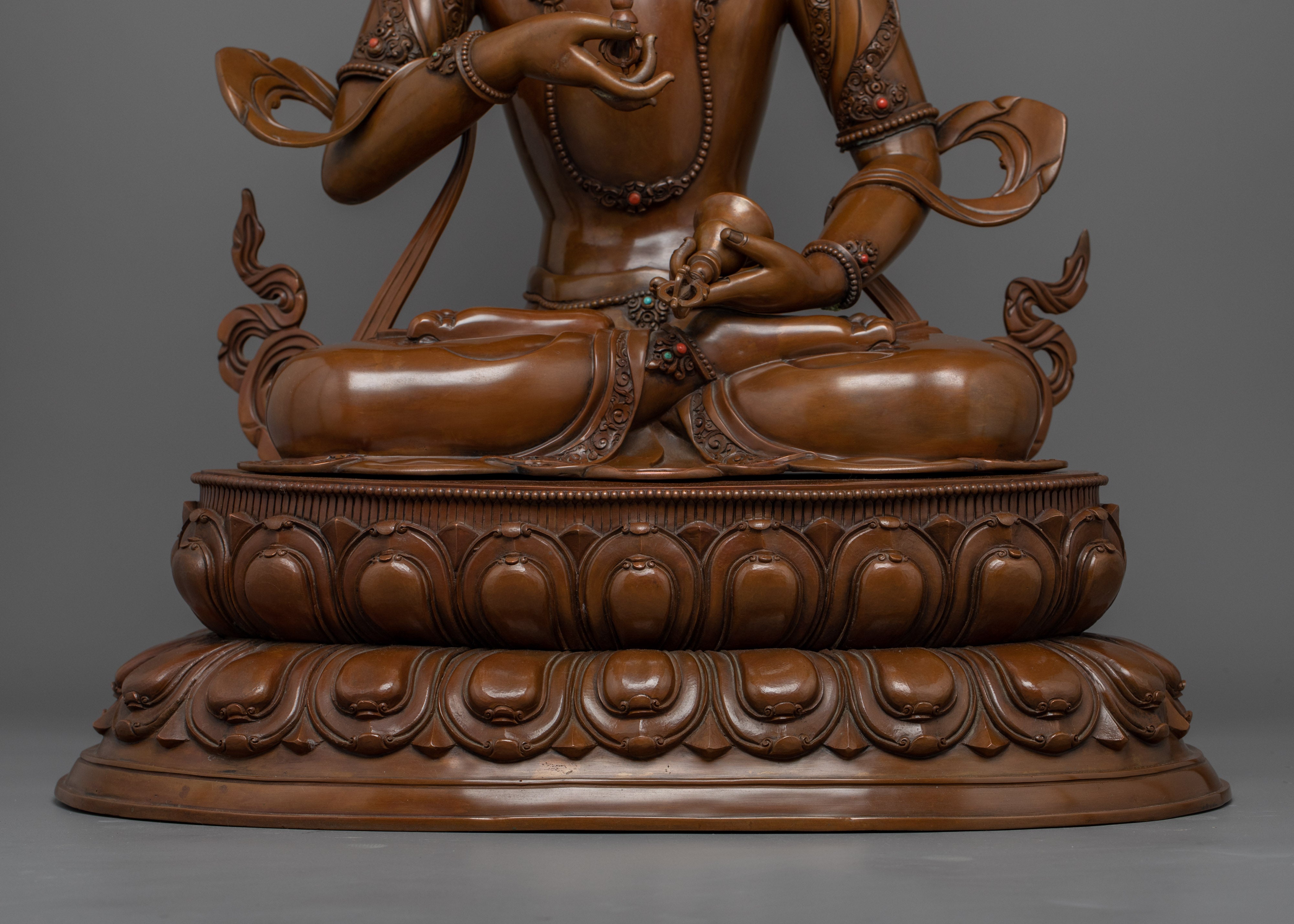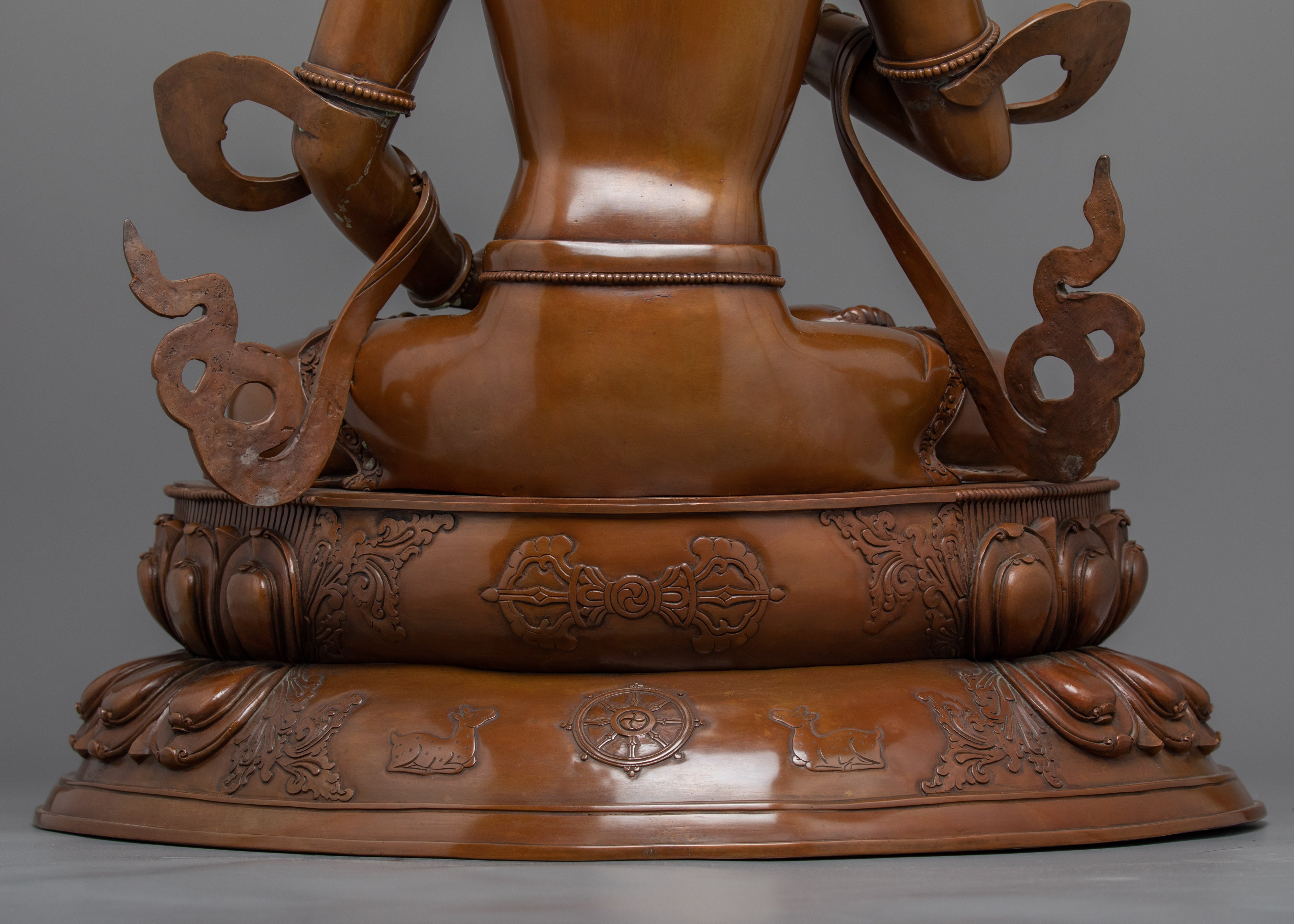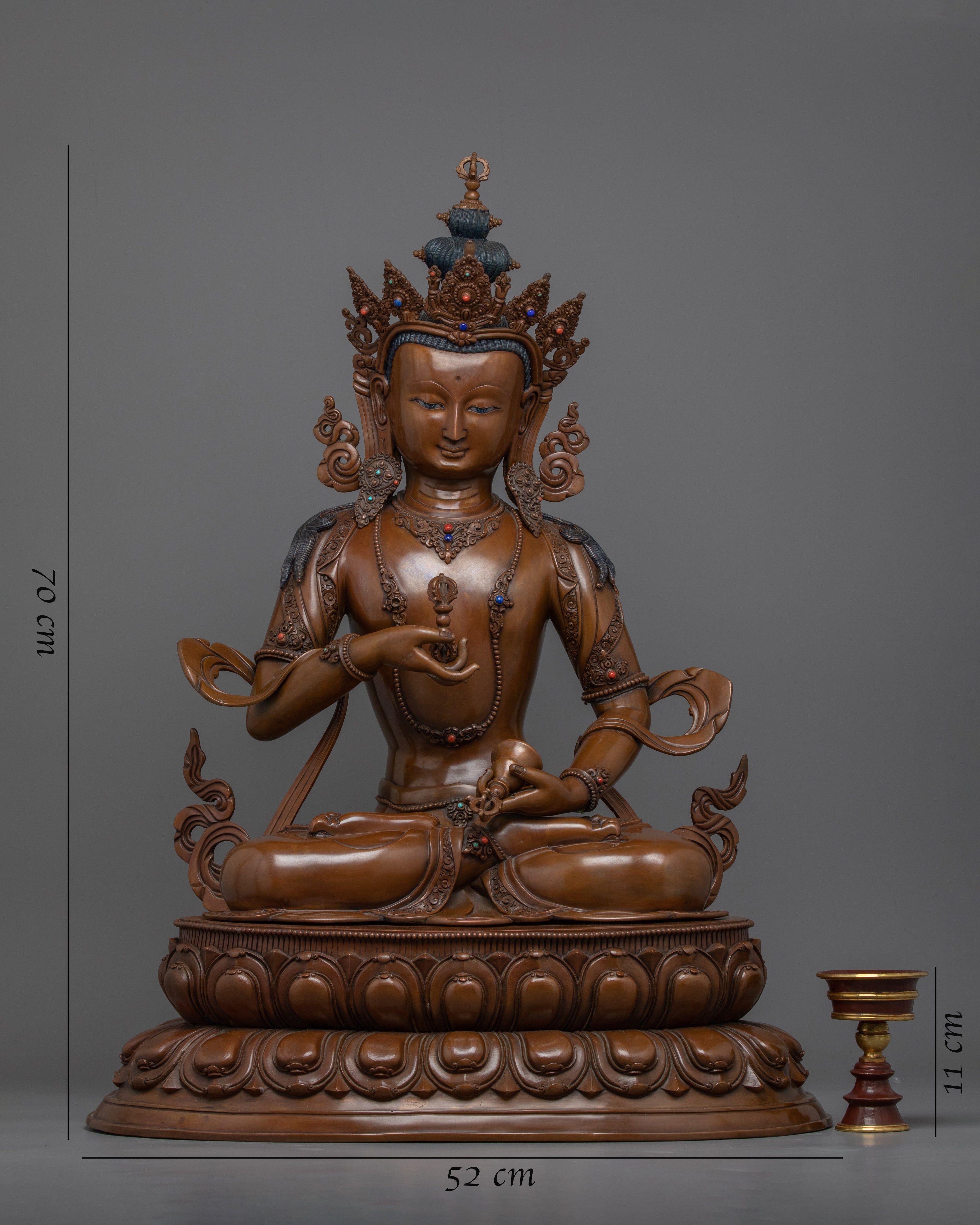Description
Copper Statue For Dorje Sempa Mantra Practice
The Copper Statue For Dorje Sempa Mantra Practice was carved by hand in our studio using the skills handed down over decades. This sculpture's body is oxidized copper, intricately carved to accentuate the statue's minute details. In Tibetan, Vajrasattva is sometimes referred to as Dorje Sempa. The deity is perched on a moon disc on a lotus, clutching a vajra in his right hand and a bell in his left. He had a contented look on his face. This figure can be used in various Buddhist rituals and meditation exercises. The crown, body ornaments (necklace, armlets, bracelets, anklets, and earrings). All the attributes of the deity are hand-carved using a hammer and chisels. We used a hammer and small chisels to hand-carve the intricate design patterns. To do delicate carvings, artists must have decades of experience as he has to create intricate design patterns on a small surface area. He has to fulfill every minute detail on the statue based on the traditional iconography in Buddhist scriptures. The figurine weighs about 19.47 kg and took years of hard work and dedication to complete it.
You can use this Vajrasattva Statue for different Buddhist ceremonies, Rituals, Monasteries, and even for personal activities like yoga and meditation.
Size: 27.5"/70cm (Height) x 20.4"/52cm (Base)
Weight: 19.47 kg
Material: Oxidized Copper Body
Vajrasattva is typically regarded as the second patriarch in the Shingon Buddhist lineage, the first being Vairocana Buddha. According to Kukai's writings in Record of the Dharma Transmission, Nagarjuna encountered Vajrasatva in an iron tower in southern India, based on Amoghavajra's testimony. As recounted in the Mahavairocana Sutra, Vajrasatva inducted Nagarjuna into the abhiseka ceremony and entrusted him with the esoteric teachings he had gained from Vairocana Buddha. Kukai doesn't go into detail on Vajrasatva or his beginnings.

